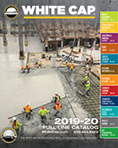How To Use Concrete Admixtures
Admixtures: what to use, and when
(used by permission from ACI’s Concrete Craftsman Series “Concrete Fundamentals”)
Any material deliberately added to change the fresh or hardened characteristics of concrete, before or during mixing (Fig. 2.9) other than cementitious materials, water, aggregates and fiber reinforcement is called an admixture.
There are many kinds of admixtures, including:
- Air-entraining admixtures
- Accelerating admixtures
- Retarding admixtures
- Water-reducing admixtures
- High-range water-reducing admixtures (superplasticizers)
- Miscellaneous special purpose admixtures, such as colors, corrosion inhibitors, and pumping aids
ASTM C260/C260M, “Standard Specification for Air-Entraining Admixtures for Concrete,” is a standard specification specifically for air-entraining admixtures. ASTM C494/C494M, “Standard Specification for Chemical Admixtures for Concrete,” defines requirements for accelerating admixtures, retarding admixtures, water-reducing admixtures, and high-range water-reducing admixtures (superplasticizers). It also provides for dual-function admixtures that combine water reduction with either acceleration or retardation of the mixture. Finely divided SCMs such as fly ash and natural pozzolans are covered by ASTM Cl41/C141M, “Standard Specification for Hydrated Hydraulic Lime for Structural Purposes,” ASTM C618, “Standard Specification for Coal Fly Ash and Raw or Calcined Natural Pozzolan for Use in Concrete,” and ASTM C989/C989M, “Standard Specification for Slag Cement for Use in Concrete and Mortars.”
Air-entraining admixtures
Air-entraining admixtures produce tiny air bubbles in concrete (Fig. 2.10).
The bubbles are formed by the mixing action and the air-entraining admixture keeps the bubbles from breaking up. Do not confuse entrained air with ordinary, larger air bubbles trapped in the concrete during mixing. The largest of the purposely entrained bubbles are 4/100 of an inch (1 mm) in diameter; the smallest ones range down to 4/10000 of an inch (10 μm), no larger than the width of a delicate hairline crack. The bubbles should be small because in addition to the amount of entrained air, the bubbles need to be closely spaced to provide the intended benefit. These purposely entrained air bubbles are uniformly distributed throughout the concrete, giving it greatly improved ability to withstand freezing and thawing. The air bubbles in the paste provide room for expansion of the freezing water, thus relieving the otherwise disruptive pressure. Air entrainment also makes fresh concrete more workable for a given water content and helps reduce bleeding and segregation.
Accelerating admixtures
Accelerating admixtures speed up the setting and hardening of concrete. They are especially useful in cold weather because concrete hardens slowly at temperatures below about 50°F (10°C). The most common of these admixtures is calcium chloride. However, calcium chloride in concrete can increase the potential for corrosion of reinforcing steel and some other metals. When required by the specifications, non-chloride accelerators are available for use. Accelerators do not, however, replace proper curing and frost protection. The intent of accelerating admixtures is to promote the same setting time and bleed period for concrete placed during warmer temperature. When used during warm temperature, accelerators shorten the setting time and bleed period, which can result in an increase in the shrinkage potential and corresponding risk of cracking.
Retarding admixtures
Retarding admixtures slow down the initial setting of the concrete. They are often used in warm weather to keep the concrete from setting before it can be placed and finished. Most retarding admixtures are also water-reducing admixtures. And, just as accelerators should not be used in warm weather, using a retarder during colder temperatures could delay the setting time and prolong the bleed period too much. As with accelerators in cold weather, the purpose of a retarder is to promote a set time and bleed period during warm weather similar to that during normal placement temperatures.
Water-reducing admixtures
Water-reducing admixtures, as the name suggests, reduce the amount of water needed to produce a cubic yard of concrete of a given slump. If they are added to a mixture without reducing the amount of water, water reducers will act to increase the slump of the concrete.
High-range water-reducing admixtures
High-range water-reducing admixtures (ASTM C494/ C494M and ASTM Cl017/Cl017M, (“Standard Specification for Chemical Admixtures for Use in Producing Flowing Concrete”) are commonly referred to as “superplasticizers.” They reduce the water requirement for concrete dramatically. They can be used to temporarily increase the slump or flowability of normal or stiff concrete to make it more flowable and easier to place with little vibration. They can also be used to reduce the water needed while improving workability of concretes that are consolidated by vibration. The action of some superplasticizers lasts only about 30 to 60 minutes at normal temperatures. Then the concrete stiffens very rapidly. For this reason, they are often added to concrete at the jobsite. However, caution is advised when adding a chemical at the jobsite to ensure the setting behavior does not vary between batches. Extended life superplasticizers are available for addition at the batch plant.
Supplementary Cementitious Materials
Supplementary cementitious materials (SCMs) may be used in large amounts, generally in the range of 20 to 100 percent replacement by mass of portland cement. They are powdered or pulverized siliceous materials added before or during mixing to improve or change the properties of concrete.
They are generally natural or by-product materials such as:
- Hydraulic hydrated lime (ASTM Cl41/Cl41M)
- Slag cement (ASTM C989/C989M)
- Fly ash and natural pozzolans (ASTM C618)
- Silica fume (ASTM Cl240)
Some SCMs, such as lime and slag cement, have cementlike properties-that is, they can set and harden in the presence of water. Pozzolans by definition are materials that have little cementitious action when used alone, but when used with portland cement they react with products of cement hydration to develop additional cementing action. These reaction products are the same as those needed for silicate-based surface hardeners, which can be less effective when applied to concrete containing fly ash. However, some of the finely divided minerals have both cementitious and pozzolanic properties.
Today the most commonly used pozzolan is fly ash, a finely divided residue that results from burning ground or powdered coal, which is usually the by-product of coalburning power plants. Fly ash particles are spheres with typical diameter less than 20 millionths of an inch (500 millionths of a millimeter), somewhat finer than many portland cement particles. Some fly ash has both pozzolanic and cementitious properties.
Condensed silica fume, sometimes called microsilica, has gained attention recently as a pozzolan with particles only one hundredth the size of fly ash particles. Silica fume is a byproduct of induction arc furnaces in the silicon metal and ferrosilicon alloy industries.
Pozzolans as admixtures or replacement for part of the portland cement in a mixture improve the workability of fresh concrete; reduce thermal cracking in massive structures, because they reduce the heat of hydration; and by reducing the permeability of concrete, improve its durability. In the amounts normally used, most pozzolans cause a reduction of early strengths up to 28 days, but improve the long-term strength. Some authorities (Design and Control of Concrete Mixtures 1) consider use of pozzolans essential to production of high strength concretes above 8500 psi (60 MPa).
Mixing Water
Water quality is a concern because the chemicals it contains, even in very small amounts, sometimes change the setting time of the mixture or the long-term properties of the concrete. Almost any natural water that is drinkable can be used to make concrete. Treated city water, or tap water, from most U.S. and Canadian cities with a populations of 20,000 or more are also suitable for making concrete. Some water that is not drinkable, including recycled waters from mining and other industrial operations, may also be used, but tests should be made of such water before using it. Non drinkable water should be tested in accordance with ASTM Cl602/Cl602M, “Standard Specification for the Mixing Water Used in the Production of Hydraulic Cement Concrete.”
Seawater containing up to 35,000 parts per million (ppm) of dissolved solids, is not harmful to the strength of plain (unreinforced) concrete, but it may cause reinforcement to rust in reinforced concrete. Waters containing appreciable amounts of oil, salt, algae, or sugar should be checked before using in concrete. Mortar cubes made with questionable water should have at least 90 percent of the reference strength of specimens made with clean water.
Follow ASTM C 191, “Standard Test Methods for Time of Setting of Hydraulic Cement by Vicat Needle,” to assure that the water does not affect the setting time of the cement to an unacceptable degree. Where specifications place severe limitations on chloride content of concrete, it might be necessary to consider the chloride content of mixing water when selecting concrete proportions.
![]()
This article is an excerpt from ACI‘s Concrete Craftsman Series “Concrete Fundamentals” and is used by permission. To purchase this series, or other ACI educational publications, go here.
 Contents of this article are also covered in ACI’s Certificate Program Package titled “Fundamentals of Concrete Construction”
Contents of this article are also covered in ACI’s Certificate Program Package titled “Fundamentals of Concrete Construction”






